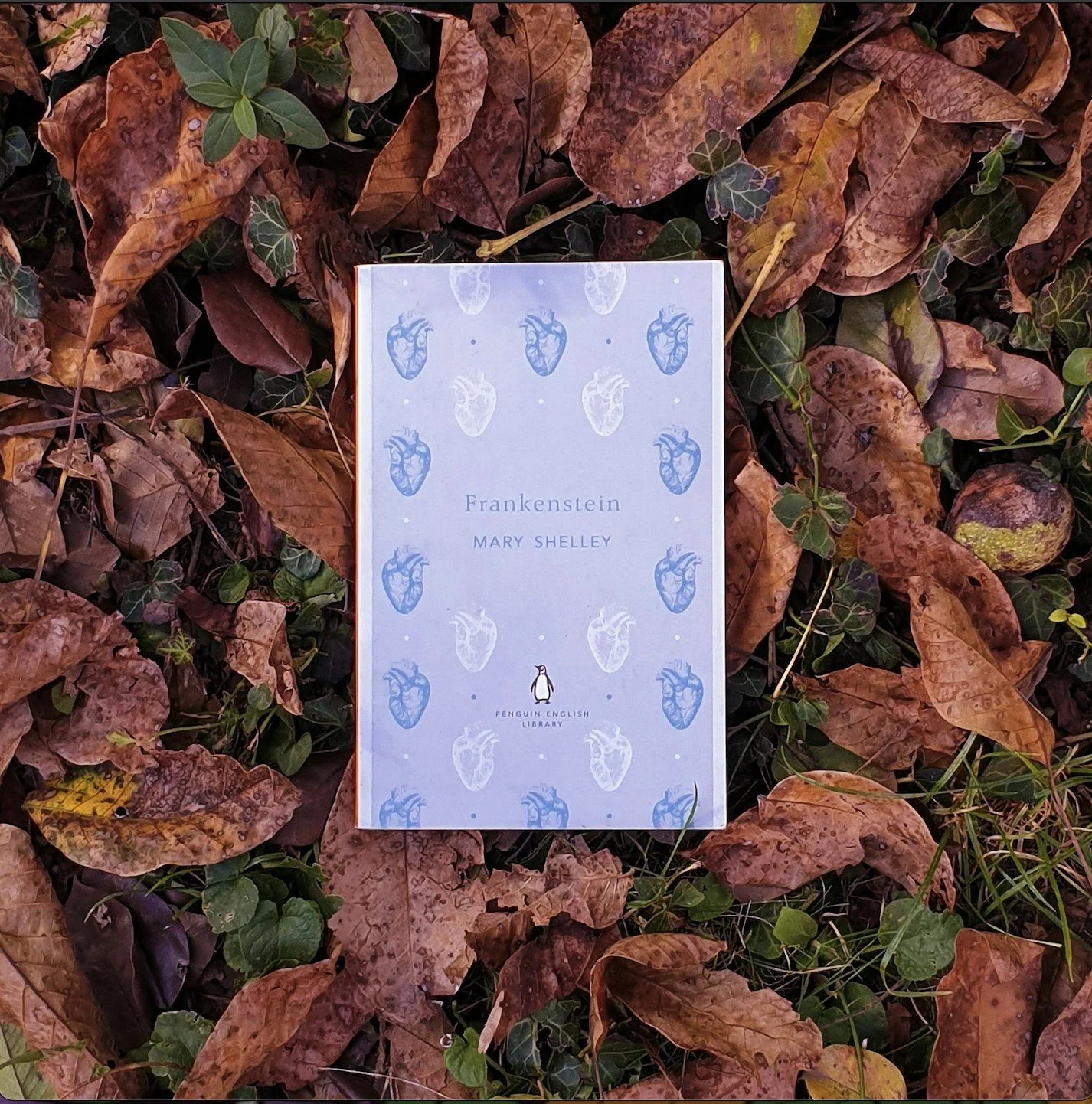Guillermo del Toro's “Frankenstein” has Mia Goth at the Center of the Classic
A copy of Mary Shelley's "Frankenstein" which Guillermo del Toro adapted in his 2025 film version. Photo courtesy of Viola Kovács via Pexels
For nearly three decades, Director Guillermo del Toro has been working to bring his film adaptation of “Frankenstein” to action. On Aug. 30, the film was released with a limited run in theaters, and will become available on Netflix on Nov. 7.
With indie scream queen Mia Goth as the lead, the film presents Mary Shelley’s 1818 novel to modern audiences.
Goth has been at the center of A24’s “X” trilogy, featuring the films “X,” “Pearl” and “MaXXXine,” while also appearing in the film “Infinity Pool” in 2023. Throughout these years, she has become known for her piercing scream and representation of unhinged and troubled female characters.
Serving as a centerpiece for a variety of indie horror films, Goth has made her mark and seems to be moving on to bigger and higher-budget projects, such as “Frankenstein.”
The modern adaptation seems to be the perfect transition for Goth from indie horror films to larger budget pieces. “Pearl,” one of Goth’s most well-known A24 films, was made with a budget of $1 million, which pales in comparison to the whopping $120 million utilized in her newest piece.
Goth brings her unique style and strong horror background to the 2025 film, anchoring Toro’s piece for modern audiences. The film stars Oscar Issac as Victor Frankenstein, Jacob Elordi as the creature and Goth as both Elizabeth Lavenza and Claire Frankenstein.
Goth appears during the beginning of the film as Frankenstein’s mother, Claire, and is nearly unrecognizable. Her dual casting as both Victor’s mother and his eventual love interest is an intentional decision on Toro’s part.
Through utilizing Mia Goth’s range in two separate roles, Toro can emphasize the strange relationship Victor has with his mother, Claire. Goth’s overlapping casting allows Victor’s childhood trauma and deep obsession with his mother to resonate throughout the entirety of the film, without being too overpowering to the storyline itself.
Not only has Goth transitioned to a higher budget piece, but she has also stepped into a more diverse range of characters. Her previous characters in “Pearl” and “MaXXXine” were loud and unpredictable; Goth’s newest characters, Claire and Elizabeth, are much more muted and subtle in comparison. Despite her more elevated and motherly characters, Goth still delivers her classic strong emotional undertones in “Frankenstein.”
In the original novel, Elizabeth serves more as a companion to Victor, but throughout the film, she serves as so much more. Victor’s transformation, as well as Shelley’s classic themes, are strongly portrayed around Goth’s characters.
She is positioned in the center, as a symbol of morals and humanity, and her eventual connection with the monster highlights the strong shift in Victor, making the audience begin to ponder just how far is too far.
Goth tightens Shelley’s original themes and helps del Toro make them digestible to the modern audience. As Elizabeth and Claire, Goth is both a daughter and a mother, and gives the film a tangible heart, as opposed to a surface-level perception of unethical science. A recurring face throughout the film, Goth brings Victor’s generational trauma to life, making the inescapable idea of trauma visual to an audience.
The heart and tenderness that Goth brings to the film allow characters such as the creature itself to be viewed as somewhat human. The novel’s original themes of morals and ethics are conveyed as they were originally intended, but the film also adds a more contemporary feel that contrasts with other film adaptations of the novel.
The heart and emotion brought to the film through both Toro and Goth give it an accessible core, allowing Shelley’s themes to be relatable to an entire new generation.
Toro’s vibrant visuals and themes of identity and creation make the classic something that modern audiences will be inclined to reach for. Toro’s “Frankenstein”is not only a sizable career leap for Goth, but a chance for the vital themes of Shelley’s classic to be relevant and comprehensible for generations to come.
